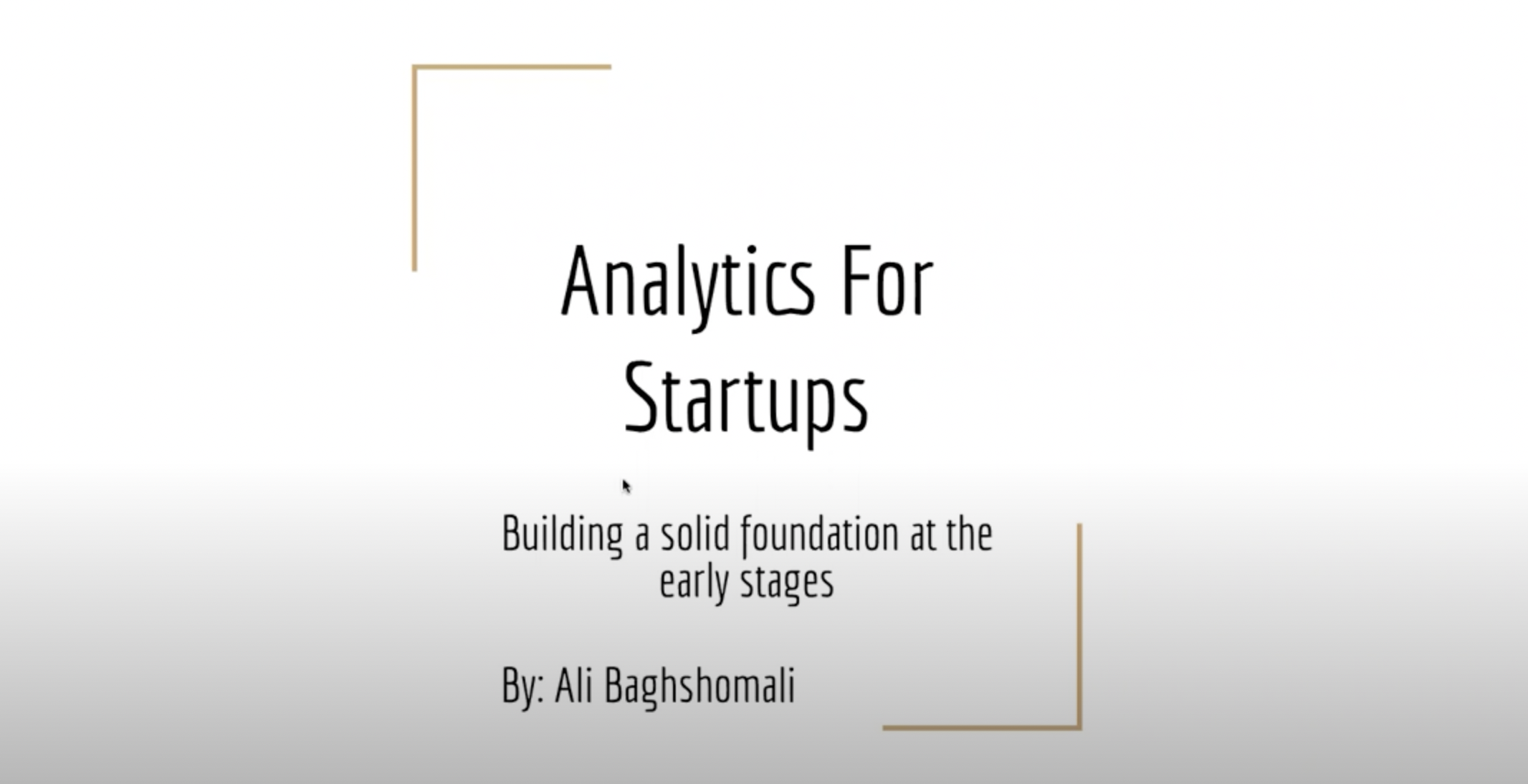
Ali Baghshomali, former data analyst manager at Bird, hosted a talk with Pear on data and analytics for early stage founders. We wanted to share the key takeaways with you. You can watch the full talk here.
While a lot has been said around building go to market and engineering teams, there’s not much tactical coverage for analytics teams. Yet analytics is one of the most fundamental and crucial functions in a startup as it launches and scales.
When should you start seriously working on analytics? Why should you work on analytics? Who should you hire? What should be in your analytics stack? What are some case studies of company analytics operations? What should you do moving forward?
When should you start seriously working on analytics?
You should start thinking about your analytics platform when your company is nearing product launch. After your product is live, you’ll receive an influx of data (or at least some data) from customers and prospects, so you want to be prepared with the proper analytics infrastructure and team to make the most of this data to drive business growth.
If you are just starting out and would benefit from working with analytics but don’t have much in house, consider using third party data sources, like census data.
Why should you work on analytics?
If done well, analytics will pay back many, many times over in time, work, money, and other resources saved as well as powerful insights uncovered that drive meaningful business growth.
Who should you hire?
In conversation, people often use “data scientist” and “data analyst” interchangeably. While fine for casual conversation, you should clearly understand and convey the difference when writing job postings, doing job interviews, hiring team members, and managing data teams.
Data scientists work with predictive models through leveraging machine learning. Data analysts, in contrast, build dashboards to better display your data, analyze existing data to draw insights (not predictions), and build new tables to better organize existing data.
For example, at Spotify, data scientists build models that recommend which songs you should listen to or add to particular playlists. Data analysts analyze data to answer questions like how many people are using the radio feature? At what frequency?
Similarly, at Netflix, data scientists build models that power the recommendation engine, which shows you a curated dashboard of movies and TV shows you may like as soon as you log in. Data analysts would conduct data analysis to determine how long people spend on the homepage before choosing a show.
Unless your core product is machine learning driven, you should first hire data analysts, not data scientists. In general, a good rule of thumb is to have a 3:1 ratio of data analysts to data scientists (for companies whose products are not machine learning driven).
For early stage startups, stick to the core titles of data scientists and data analysts rather than overly specialized ones like business intelligence engineers because you’ll want someone with more flexibility and who is open and able to do a wider range of work.
What should be in your analytics stack?
Here are examples of tools in each part of the analytics stack and how you should evaluate options:
- Database: examples include BigQuery and Redshift. Analytics databases are essentially a republica of your product database but solely for analytics. In this way, you can do analytics faster without messing up product performance. In general, it is advisable to use the same database service as your cloud service.
- Business intelligence: examples include Looker and Tableau. Business intelligence tools help you visualize your data. They connect to your analytics database. You should pick a provider based on pricing, engineering stack compatibility, and team familiarity. Don’t just default to the most well known option. Really consider your unique needs.
- Product intelligence: examples include Mixpanel and Amplitude. Product intelligence tools are focused on the product itself, rather than the over business. Specifically, they are focused on the user journey. They get code snippets inserted from the product. Because they don’t encapsulate the full code, you should consider this data to be an estimate and use the insights drawn more directionally. Product intelligence tools can be used to create charts, funnels, and retention analyses, and they don’t need to be connected to other databases.
What are some case studies of company analytics operations?
Helping Hands Community is a COVID inspired initiative that services high risk and food insecure individuals during the pandemic.
- Team: 7 engineers, no data analysts
- Product: basic with 1000 users
- Stack: Google Cloud, Firebase for product database, BigQuery for analytics, Google Data Studio for business intelligence, and Google Analytics for product intelligence
Bird is a last mile electric scooter rental service.
- Team: 50+ engineers, 30 analysts, 8 scientists, 6 analyst managers
- Stack: AWS for cloud, Postgres (AWS) for product database, PrestoDB for analytics, Tableau and Mode for business intelligence, Mixpanel for product, Google Analytics for website, Alation for data, DataBricks for ETL, and Anodot for anomaly detection (you generally need anomaly detection when ~1 hour downtime makes a meaningful difference in your business)
What should you do moving forward?
Make a data roadmap just like you make business and product roadmaps. Data roadmaps are equally as important and transformative for your startup. List the top 5 questions you foresee having at each important point along this roadmap. Structure your data roadmap in a way that your stack and team addresses each of the questions at the point at which they’re asked.
We hope this article has been helpful in laying the foundations for your analytics function. Ali is available to answer further questions regarding your analytics strategy, and he is providing analytics and data science consulting. You can find and reach him on LinkedIn here.